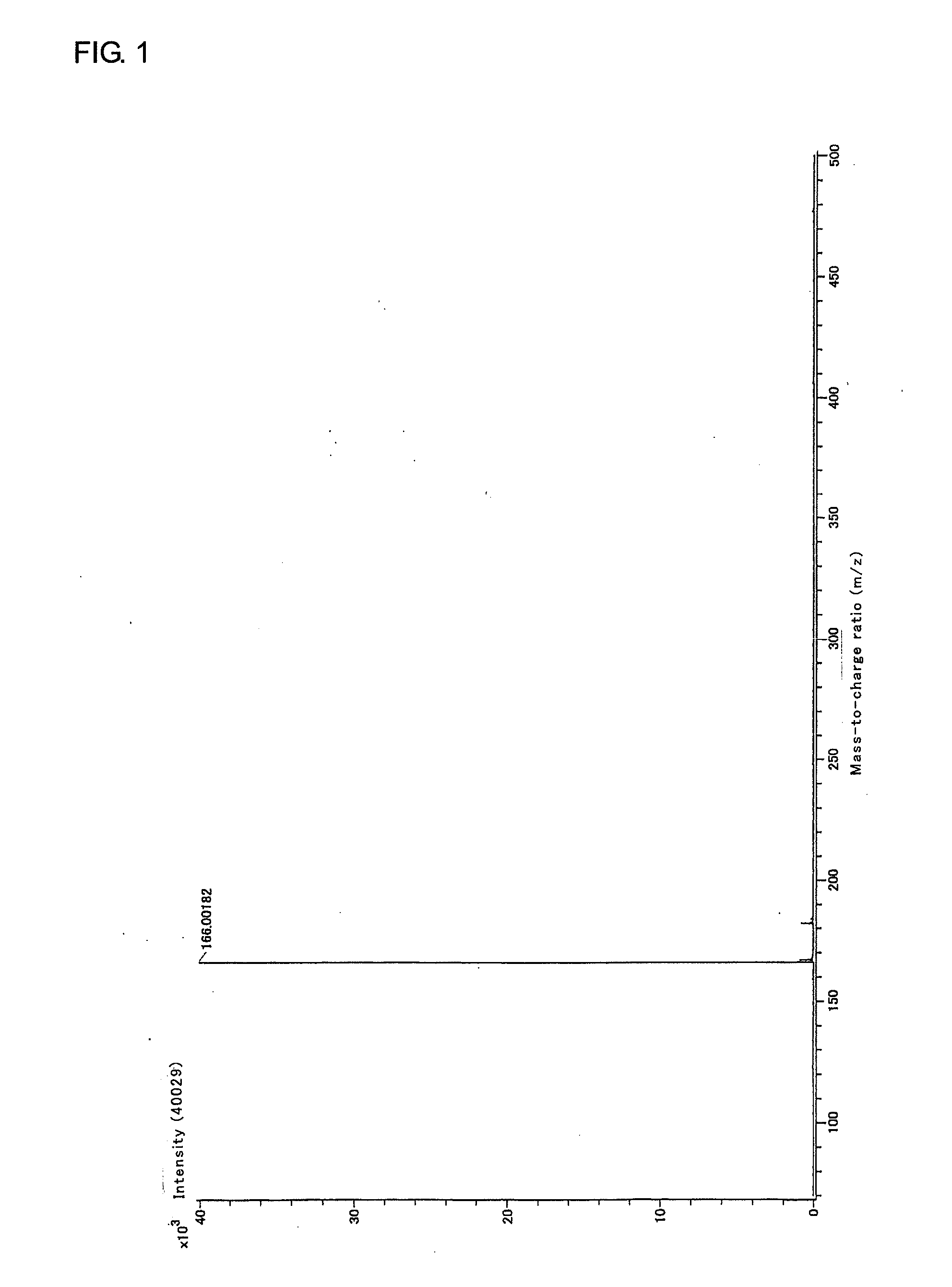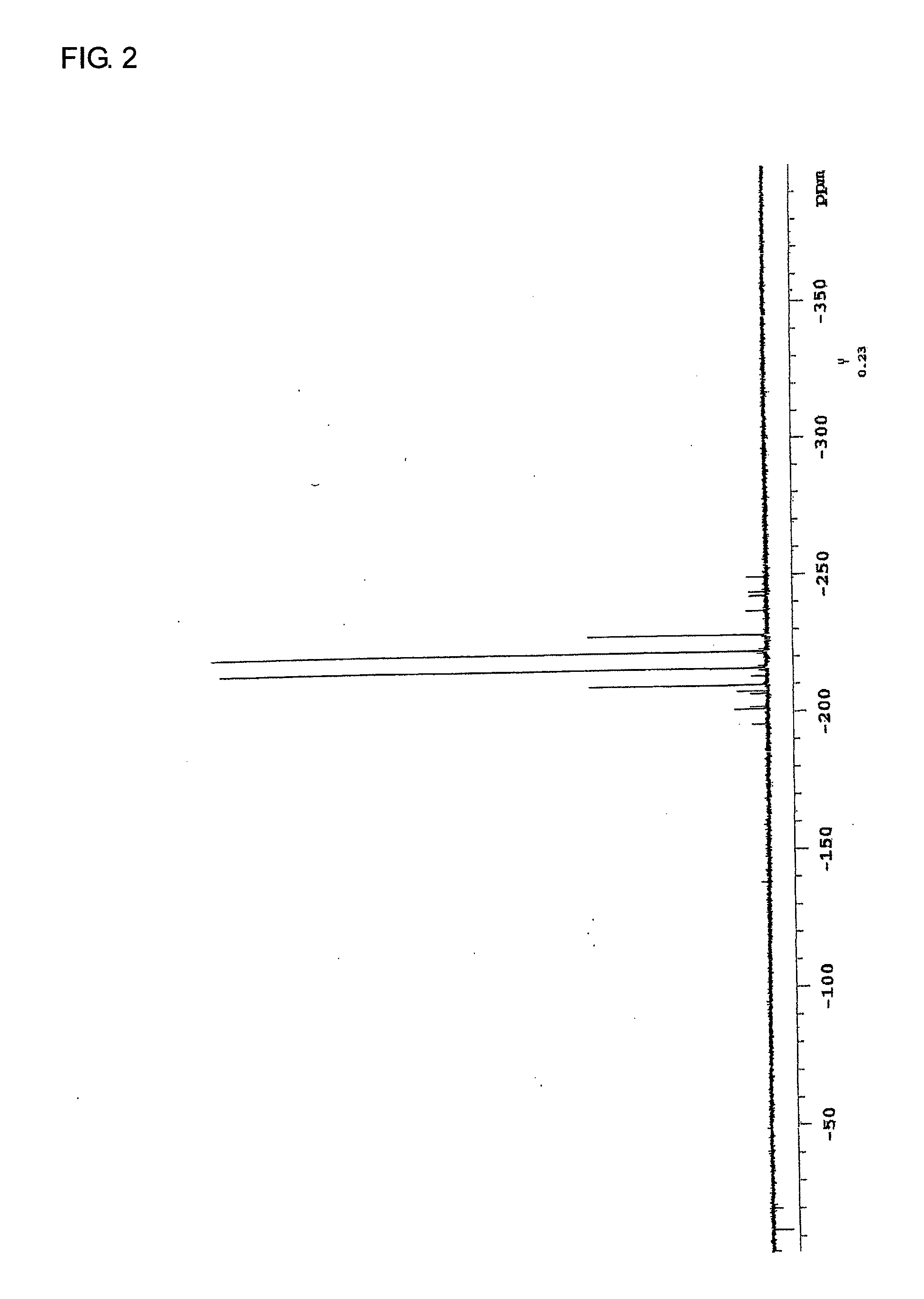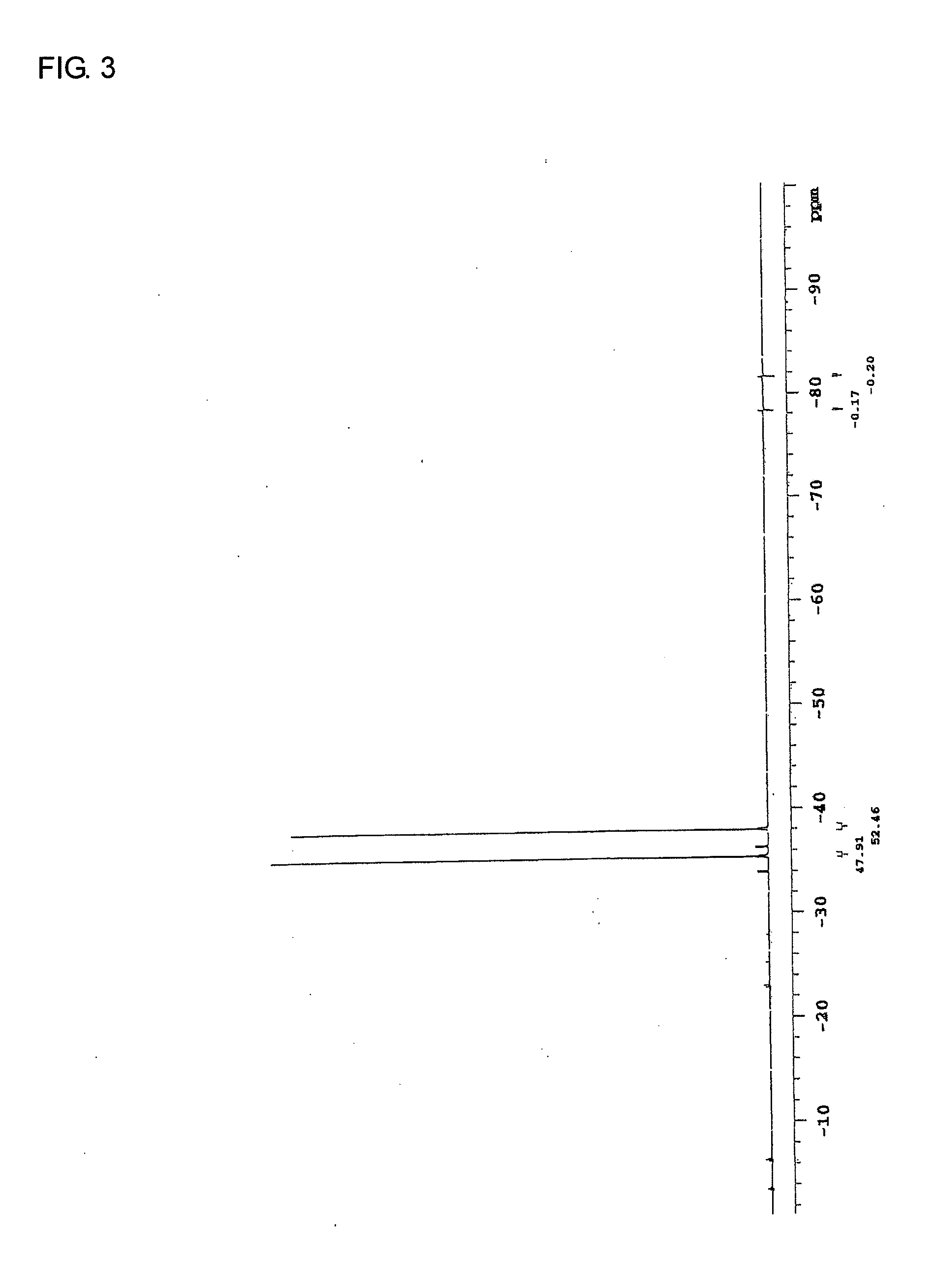Material for use as electrolyte, lithium secondary battery electrolyte, lithium secondary battery employing the same, and novel lithium salt
a lithium secondary battery and electrolyte technology, applied in the direction of non-aqueous electrolyte cells, phosphorus halides/oxyhalides, electrochemical generators, etc., can solve the problem of poor electrical conductivity, the potential level of not less than 5 v required is not met, and the protection film effective for the positive electrode is not possible to form a protective film. , to achieve the effect of high anti-oxidation potential, excellent electrochemical properties, and high electrical conductivity
- Summary
- Abstract
- Description
- Claims
- Application Information
AI Technical Summary
Benefits of technology
Problems solved by technology
Method used
Image
Examples
example 1
Production of Electrolyte Material (1) (Lithium Salt)
[0251]In an argon stream, 40.17 g (0.30 mol) of silver cyanide and 150 mL of dehydrated xylene were added into a 500-mL four-neck flask, and 8.74 mL (0.10 mol) of phosphorus trichloride was added dropwise to the resulting mixture by a dropping funnel in an ice bath. After the resulting mixture was stirred at 100° C. for 5 hours, the reaction solution was filtered to yield a sediment. Then, 150 mL of dehydrated diethyl ether was added to the resulting sediment, and the resulting mixture was filtered. The resulting filtrate was concentrated, whereby 10 g of tricyanophosphine (white solid) was yielded. The results of analysis of the yielded tricyanophosphine were as follows:
31P-NMR−132.5ppmIR2190cm-1 [CN]
[0252]Subsequently, 1.87 g (0.028 mol) of lithium chloride was added to 20 mL of dehydrated dichloromethane in a 100-mL three-neck flask in an argon stream and, after the resulting mixture was cooled to −78° C., 1.2 equivalents (0.03...
example 2
Production of Electrolyte Material (2)
[0260]First, 83.2 g (0.3 mol) of 1-ethyl-3-methylimidazolium trifluorotricyanophosphate as the ionic liquid (I) was added to 51.9 g (0.3 mol) of the lithium salt (lithium trifluorotricyanophosphate) produced in Example 1, and then the resulting mixture was stirred at a room temperature for 1 hour. Thus, a liquid electrolyte material (2) including 25 mol % of a lithium cation, 25 mol % of a 1-ethyl-3-methylimidazolium cation and 50 mol % of a trifluorotricyanophosphate anion was produced.
Production of Electrolyte (2)
[0261]An electrolyte (2) was produced by mixing 70 g of the produced electrolyte material (2) (including 26.9 g (0.16 mol) of lithium trifluorotricyanophosphate) with 30 g of an electrolytic liquid including ethylene carbonate (50 vol %) and dimethyl carbonate (50 vol %).
[0262]The properties of the electrolyte thus produced are shown in Table 1. It was confirmed that the electrolyte was excellent in electrochemical properties with a h...
example 3
[0264]An electrolyte (3) was produced by dissolving 17.3 g (0.1 mol) of the produced electrolyte material (1) in 100 g of an electrolytic liquid including ethylene carbonate (50 vol %) and dimethyl carbonate (50 vol %). The electrolyte thus produced was evaluated in the same manner as in Example 1.
PUM
| Property | Measurement | Unit |
|---|---|---|
| electrical conductivity | aaaaa | aaaaa |
| size | aaaaa | aaaaa |
| thickness | aaaaa | aaaaa |
Abstract
Description
Claims
Application Information
 Login to View More
Login to View More - R&D
- Intellectual Property
- Life Sciences
- Materials
- Tech Scout
- Unparalleled Data Quality
- Higher Quality Content
- 60% Fewer Hallucinations
Browse by: Latest US Patents, China's latest patents, Technical Efficacy Thesaurus, Application Domain, Technology Topic, Popular Technical Reports.
© 2025 PatSnap. All rights reserved.Legal|Privacy policy|Modern Slavery Act Transparency Statement|Sitemap|About US| Contact US: help@patsnap.com



